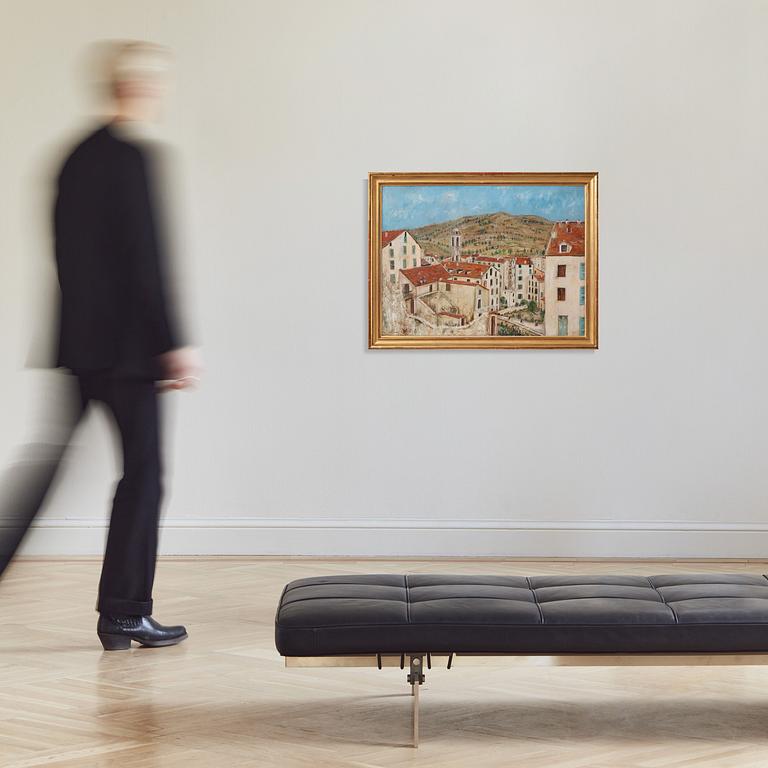Maurice Utrillo
"Vue de Corte"
Signed Maurice Utrillo. Executed 1912. Relined canvas 60 x 81 cm.
Provenance
Knoedler & Co, New York.
Acquired from the above, Carl Milles samling, Millesgården, Lidingö, 1941.
Bukowski Auktioner, Stockholm, Internationella vårauktionen 2004, cat. no. 364.
Private collection.
Literature
L'oeuvre complet de Maurice Utrillo, Paris 1959, p. 413, cat. no. 347.
More information
Maurice Utrillo’s style was very unique, he was not a primitivist, classicist, realist, impressionist, fauvist or expressionist, but rather an individualist! Utrillo is most known for his Paris-motifs from mainly Montmartre and Montmagny, but he carried out paintings of views from England and Corsica where he travelled with his mother, the artist Suzanne Valdon, who taught him to paint. In October 1912, Utrillo travelled with his mother and future father-in-law to Belgodère in Corsica. During this stay, his palette became warmer, and a more colourful creative period began. In Corsica, he created artworks that have a strong intensity, the motifs are cityscapes with whitewashed picturesque house facades crowded on a cliff. In "Vue de Corte" he has visited the old capital of Corsica, a place with a fiery history. The town is beautifully situated on a rocky ridge in a barren, rugged landscape, and acts as a divider between the north and south of part the island. The heart of the city is Place Paoli, where a statue of the Corsican freedom hero Pascal Paoli looks out over the city. Paoli was behind the island's first democratic constitution in 1755. Corte is filled with narrow alleys that climb up towards the citadel, a motif that often appears on postcards from the island. There in the citadel, Corsican patriots were kept locked up during the Italian occupation during World War II. Napoleon Bonaparte said "Everything in Corsica was better and more beautiful than anywhere else", something that fits well with the city of Corte.
In 1931, Carl Milles moved to Cranbrook, a small town located a few miles northwest of Detroit in Michigan. Cranbrook Educational Community is an
education, research, and public museum complex founded in 1904 by Georg Booth and his wife Ellen Scripps Booth. In 1927, the Cranbrook Foundation was formed and when Carl and Olga Milles moved there in 1931, the foundation maintained, in addition to the church, the art museum and the natural history museum, three schools, a higher science institute, an art academy and a Greek theatre. In this multifaceted environment, Carl Milles came into contact with major art collectors and a desire to collect international works of art was born. In New York, he became a frequent visitor to the renowned art dealer M. Knoedler & Co at 14 East 57th Street. Carl Milles expanded his already extensive collection of southern European paintings from the 16th-17th centuries and German and Austrian wood sculpture. Two significant French works of art were acquired at Knoedler & Co, a landscape by Camille Pissarro and a Corsican cityscape by Maurice Utrillo, the latter now subject to sale. When Carl Milles returned to Sweden in the early 1950s, the Utrillo painting was placed in the music hall at Millesgården, his home and studio.
























































